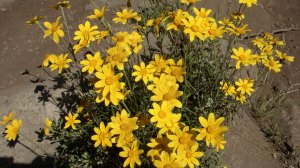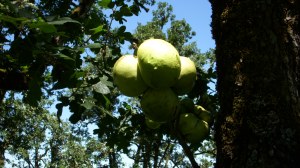July 6, 2011
I drove south from Skinner Butte to the 30th Avenue Exit #189 and stopped at SeQuential Biofuels Station No. 1. I hate gas stations and I didn’t need gas, but SeQuential has great coffee and wonderful natural, local food so I stopped to pick up lunch. The station already has a Tesla electric vehicle (EV) charging station and I hope they get to participate in the EV Highway charging network. You can already get biofuel there, as well as standard gasoline.
From the station I went east to the Howard Buford Recreation Area, a 2,363-acre Lane County Park. I parked and started up the Theodore Trail through oak/fir woods before breaking out onto grasslands and connecting with the main Beistel’s West Summit Trail. A trail map is available online. Bill Sullivan says that, “The first Lane County pioneers climbed this grassy hill between the forks of the Willamette River, viewed the green dales at the end of the Willamette Valley, and named the hill Mount Pisgah, for the Biblical summit from which Moses sighted the Promised Land.”
The trail was busy on a midweek morning with walkers, runners and families of all shapes and sizes. Flowers, native and invasive, blew in the wind.
At the top, the author Ken Kesey, from Pleasant Valley, contributed a lovely sculpture that shows the topography of the area and the fossils, fish and wildlife found here. He must have looked up at Mt. Pisgah nearly every day of his life.
 I sat on a bench just east of the summit looking south toward the Calapooia Mountains and eating my lunch before heading back to the car by the Arboretum. A group of kids from a day care center was eating lunch in the White Oak Pavilion. I strolled out to an oak grove imagining all the picnics here over the years.
I sat on a bench just east of the summit looking south toward the Calapooia Mountains and eating my lunch before heading back to the car by the Arboretum. A group of kids from a day care center was eating lunch in the White Oak Pavilion. I strolled out to an oak grove imagining all the picnics here over the years.






